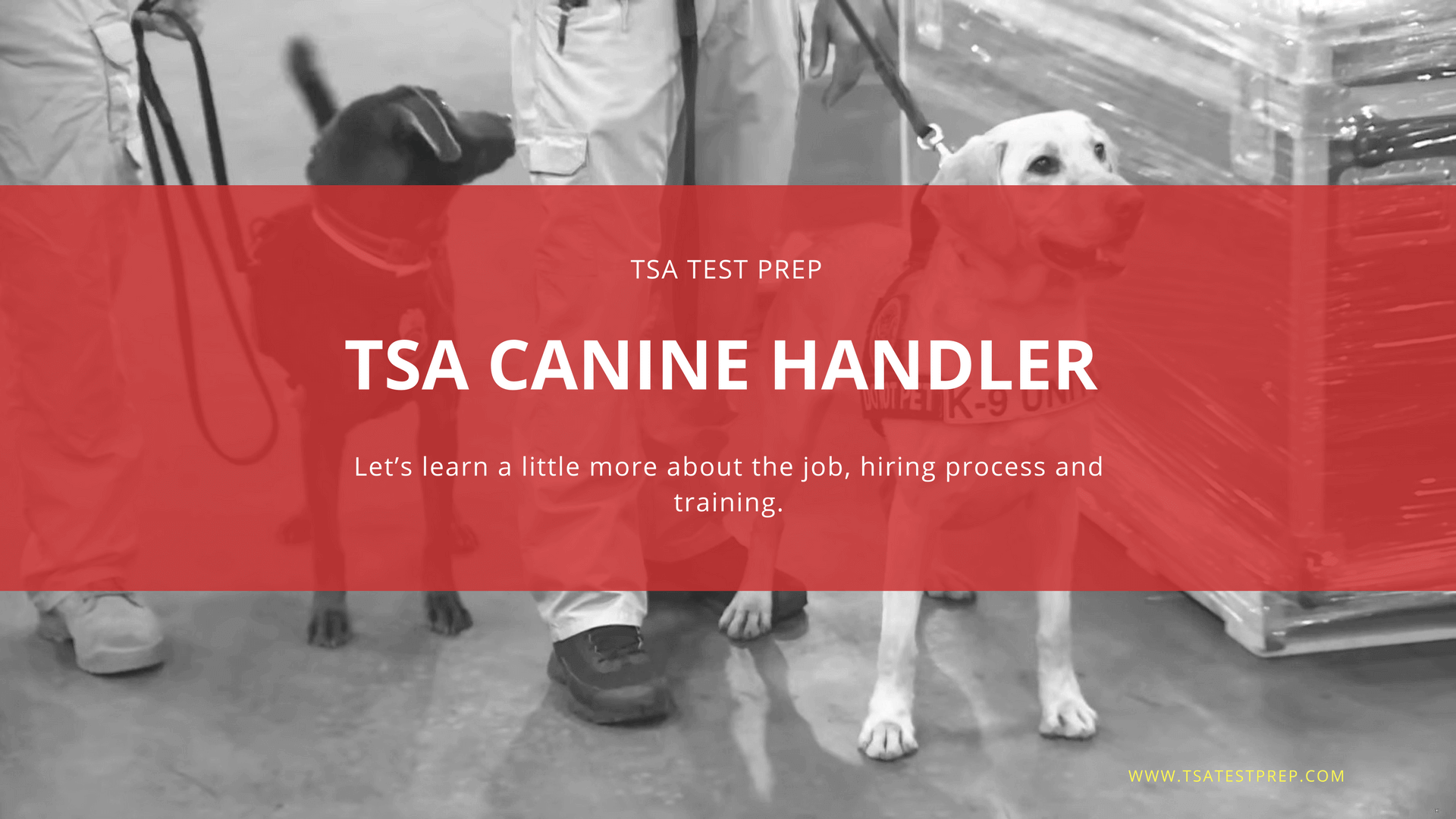
TSA Canine Handler Hiring Process
A detection canine handler is one of a few careers that allows a unique combination of protecting the country's airports and a close working connection with a canine. This unique career is quite sought after and includes a handsome compensation. There are over 900 explosive detection dog teams working across national airports today. Canine teams work at over 100 of the nation's airports, maritime systems, and mass transit systems. The demand for detection dog handlers continues to increase annually.
What Is a Detection Canine Handler?
Detection dog handlers are individuals in charge of supervising canines that detect drugs, explosives, or other substances.
What Are Some of the Duties of a Detection Canine Handler?
Detection dog handlers are teamed up with a detection dog specifically trained to identify a target substance. Detection dog can be trained to search for drugs, explosives, traces of bomb-making materials, blood, agricultural items, firearms, or money. A canine handler is responsible for understanding their canine's signals and then initiating a contraband search, then turning over an prohibited substances.
What Responsibilities Does a Handler Have for Their Canine?
A handler has a special bond with their canine. They must provide basic care for their dog including giving them food and water, grooming, bathing, and taking them to the bathroom. They also must maintain continual training exercises and monitor their detection skills through drills.
How Can You Become a TSA Canine Handler?
In order to become a TSA Canine Handler a candidate must complete the TSA National Explosives Detection Canine Program. Those accepted to the TSA program are candidates who are either transportation security inspectors or local/state law enforcement officers. Law enforcement officers make up roughly 65 percent of the program and 35 percent are transportation security inspectors. Those individuals accepted into the program often have a solid working knowledge of canine behavior. For a TSO officer to gain acceptance to the the TSA canine program they must have experience in the field of inspection as a customs officers or inspector.
What Is Involved in the TSA Canine Training Course?
Handlers and canines are paired up and trained in detecting emerging threats and intelligence analysis, in Lackland Air Force Base in San Antonio, Texas. There are two different training tracks; conventional explosives detection handler, and Passenger Screening Canine Handlers. A Conventional handler undergoes a 10-week training course. Where as the Passenger handler undergoes a 12-week training course. Upon completion the duo can successfully recognize odors of prohibited items and locate the source, the handler can interpret the canine's change in behavior, the handler can conduct logical and systematic searches.
What Happens After Graduation from the TSA Canine Academy?
After graduation from the program, the canine and handler train for another 30 days at their assigned location to familiarize themselves with the location. During this training, they undergo many additional training scenarios, and desensitize the canine to regular noises at the facility. There is a yearly recertification program for TSA detection teams.
What Is the Salary for a Detection Dog Handler?
Detection dog handlers can earn anywhere from $47,000 to $98,500 at major U.S. airports.

Have a Question? Now You Can Ask TSA Test Prep!